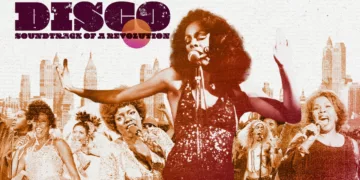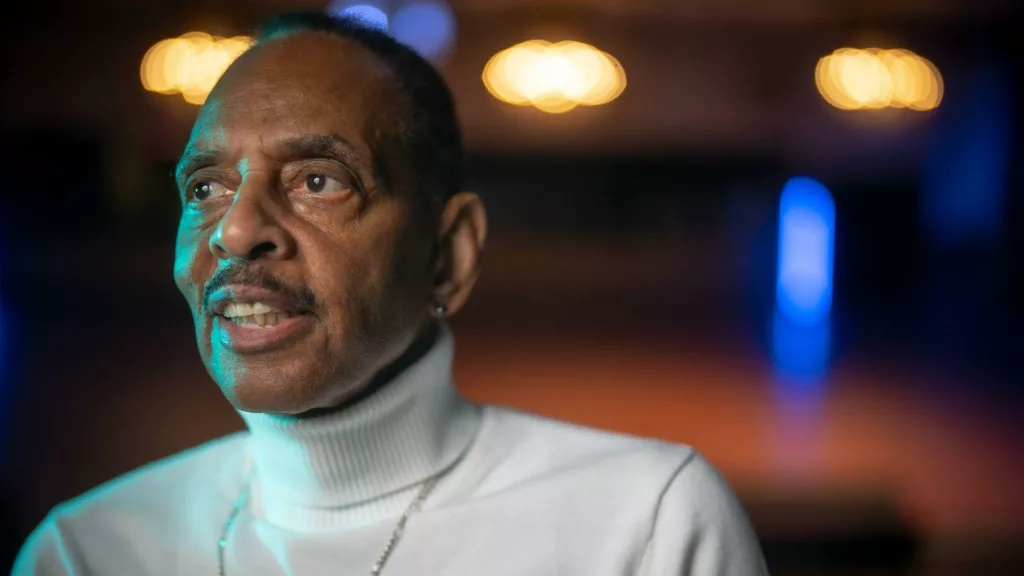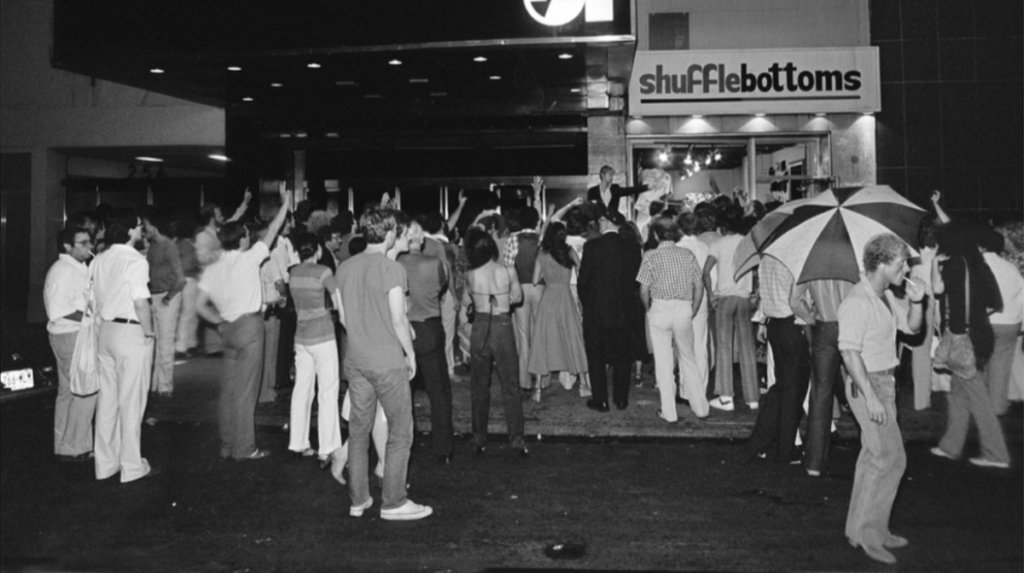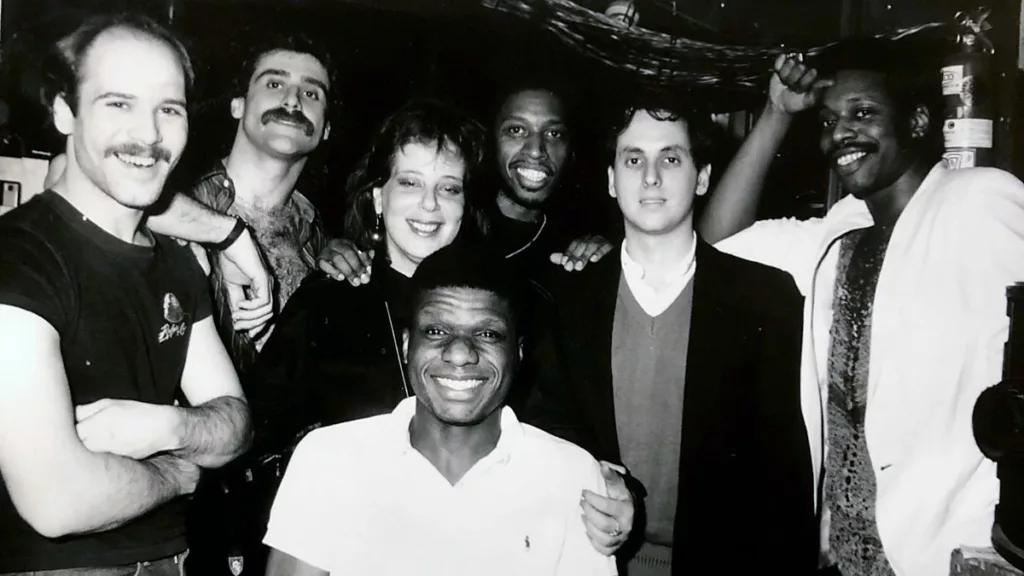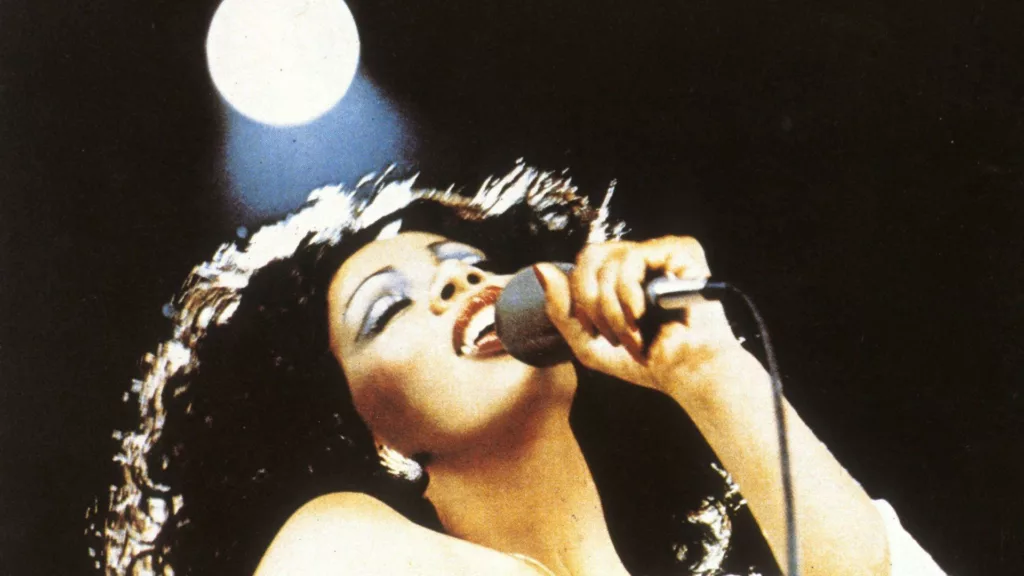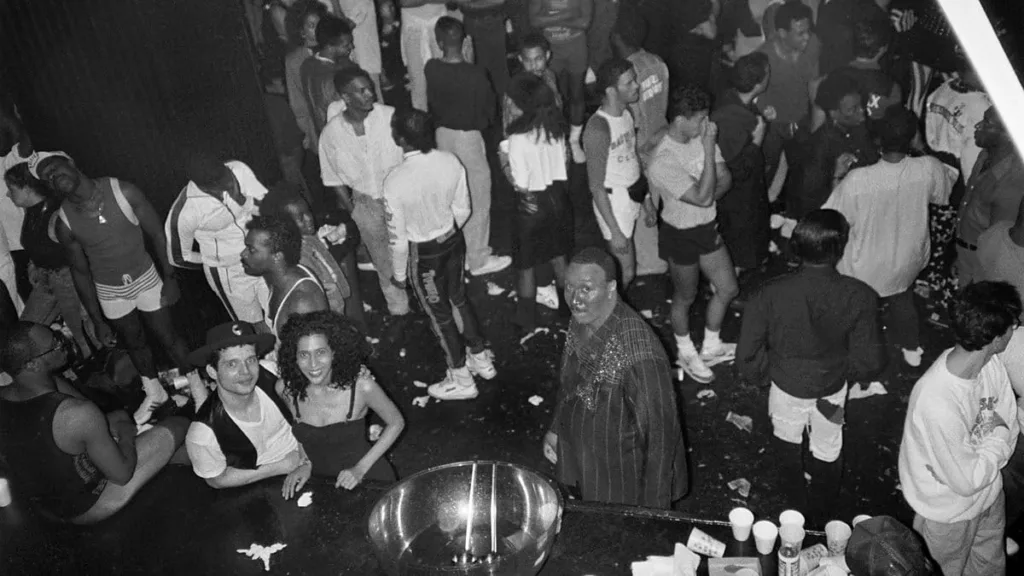Music has always been about community and connection. In the liberating beat that pulsed through New York warehouses in the early 1970s, disparate groups found unity. Creative souls from diverse backgrounds came together on the dance floor, escaping from a world reluctant to accept difference.
In the underground discos, dancers moved as one to live soundscapes crafted by passionate DJs. Musicians and party promoters opened their venues to anyone seeking musical refuge. For many, it was a revelation—a place where race, gender, or orientation didn’t dictate worth. Expressive dancing lets inhibitions fade under pulsing rhythms.
Word spread fast about these secret havens. Soon, disciples of the disco sound swelled club capacities. Dedicated dancers explored new realms on the dance floor, while DJ talents rose to brilliance.
As the underground blossomed, iconic voices amplified disco’s message of empowerment. Powerhouses like Donna Summer and dancefloor monarchs The Village People took disco anthems global with their pride and flair.
So the underground went mainstream. But massive success can dilute passion, and commercialization stressed disco’s roots. Resentments grew as marginalized groups found new visibility. Backlash was inevitable for a revolution that shook conventions.
Yet disco’s drive for inclusion and unity has kept reverberating. Its legacy lives on in musical movements, embracing all walks of life who simply want to feel joy’s rhythm. Though comets may flare and fade, disco’s dance floor will always be there—a place where diverse souls can commune as one in dance.
The Warehouse Rises
In the dead of night, the party was just getting started. Down dim alleyways and hidden behind unmarked doors, a secret rhythm pulsed through the streets of New York. There, souls gathered, seeking escape from a world resistant to difference. Inside abandoned warehouses and loft spaces, diverse crowds came together in mutual understanding; all that mattered was how you moved to the beat.
This was the birthplace of disco. In underground nightclubs like David Mancuso’s Loft, creative spirits were fostering a new sound. As DJs curated playlists of “danceable R&B,” dancers freely expressed joy through movement without judgment. For black and LGBT communities, these havens offered rare refuge. Politeness disappeared at the door; only passion for pulsating percussion remained.
“Everyone came as they were,” recalls Hollis Gay, a long-time Loft regular, speaking of diversity embraced without pretense. “It didn’t matter your race or your sexuality; we were all there to dance.” New friends opened doors to new parts of town, new music, and new lives. David Mancuso welcomed all to his home, nurturing a community through grooves.
Other innovators soon followed. Nicky Siano swung open the doors of NYC’s Manhattan Inn, treating crowds to his eclectic DJ sets and lighting manipulations. “People felt liberated and free to be who they wanted,” Nicky recalls. Trusting no one else would play to their preferences, daring party promoters took sound systems into their own hands. Legends like Bobby “DJ” Guttadaro let nothing but rhythm dictate the night.
Before long, unheard tunes spilled from hidden lairs into living rooms worldwide. Bootleg tapes spread the gospel of the warehouse revolution. As the movement went underground, its spirit thrived on music’s ability to uplift all people as one. Through the long years since, that drive for unity through sound has continued to echo in discotheques everywhere the beat goes on.
Divas in Disco
As disco boomed, the dance floors thumped with the powerful voices of gifted women. Drawing from gospel roots, divas like Donna Summer and Gloria Gaynor took the reins, steering disco to new heights with their soulful stylings.
Donna Summer was a true pioneer. With her ecstatic grooves, she dominated the charts and defined the disco era. Tracks like “Love to Love You Baby” made heads turn with their sensual spirit. Donna poured raw feeling into every note, bringing listeners to a fever pitch. Club dwellers played her songs on endless repeat, lost in the dance floor revelry she fueled.
Gloria Gaynor, too, caught the wave with the iconic “I Will Survive.” Its message of resilience and self-worth struck a chord, embodying the drive of many at the time. From its funky rhythms to Gloria’s triumphant vocals, “Survive” became the anthem of a movement. Where disco divas had once taken the backseat, now Gloria and her sisters reign supreme.
These women didn’t shy away from asserting themselves. They claimed their independence, strength, and sexuality through song. Their lyrics voiced topics too often silenced, sparking something in listeners yearning to break free. From the pulpit of the dance floor, divas preached a gospel of empowerment that spread worldwide.
The soul stirred by these trailblazing artists gave disco its heartbeat. They brought down the house with joy and passion unbound by norms. Through disco, black women discovered a platform to express all dimensions of themselves. Their influence still echoes today in the sounds of Beyonce, Rihanna, and other queens commanding charts worldwide. But it all started on those dance floors, where divas first took wing and showed the power of refusing to be anything but utterly yourselves.
Breaking Boundaries
By the late 1970s, disco had well and truly broken out of underground clubs and into mainstream popularity. None defined this new era quite like Saturday Night Fever. Starring a charismatic John Travolta, the film captured America’s growing fascination with glittering discos. But its soundtrack is what truly catapulted disco to the forefront of the cultural zeitgeist.
Bee Gees talents were already acclaimed, yet it was their contributions to the Fever soundtrack that rocketed them to a new stratosphere of stardom. “How Deep Is Your Love” and “Stayin’ Alive” became anthems, soundtracking millions of feet across dance floors worldwide. Their velvety vocals and euphoric melodies brought disco into living rooms. Families danced together in ways unimaginable just years before.
Megaclubs like Studio 54 rose to prominence, drawing crowds desperate to live like the beautiful people on screen. Its exclusivity only fueled appeal, as celebrities joined regular folks united under dance music’s spell. For many outside communities stifled by prejudice, glitzy discos represented freedoms long out of reach. Their massive popularity showed how far acceptance had come.
Yet commercial forces also seized on new opportunities. As money poured in, disco’s roots grew obscured. Capitalizing on popularity, clean-cut versions eclipsed roots in marginalized communities. Music executives banked on superficial, clean-cut versions over heartfulness and diverse voices, which first fueled the movement.
While popularity had doors once closed, appropriation diluted disco’s original power to uplift outsider groups. But it also brought discos well past selective enclaves, giving millions a brief respite from a turbulent time. And though the scene would later explode, its impact can still be felt when people of all kinds come together to simply feel and enjoy the beat. Disco had well and truly broken boundaries in a way no flame could ever extinguish.
Stirring Up Controversy
By the late 1970s, disco’s fame had reached a fever pitch. Its upbeat tunes dominated the radio waves, and studios cashed in and cranked out cheesy pop hits. But rising success also brought growing resentment, especially among rock traditionalists who felt disco threatened their genre.
Tensions came to a head in 1979 at Comiskey Park. On a normal night, the massive Chicago Stadium hosted baseball games. But on July 12th, rock DJ Steve Dahl organized “Disco Demolition Night,” inviting fans to bring disco records for destruction between ball games.
Over 50,000 people showed up wielding vinyl weapons. When the records blew up after the first game, pandemonium ensued. Fans stormed the field, ripped out bases, and fighting broke out. The second game was cancelled due to safety concerns.
While Dahl denied ulterior motives, the event stirred ugly undercurrents. Disco’s popularity arose from marginalized communities finding freedom on the dance floor. But as it gripped the mainstream, some felt threatened by this visible expression of changing social tides. The violent backlash in Chicago held darker overtones of racism and homophobia that rock fans were eager to ignore.
In truth, disco’s dominance was already waning by 1979. Studio productions grew more formulaic, and the underground vitality that launched the genre had been diluted. But “Disco Demolition” delivered a final, fiery blow. Overnight, disco became a dirty word in the music industry. Radio stations abandoned the sound, and record companies pulled support. The scene went from booming to underground once more.
Of course, reports of disco’s death were greatly exaggerated. Its freewheeling style lived on in emerging genres like house and techno. Disco balls still sparkle at parties worldwide. More importantly, the inclusive communities it fostered remain vibrant. Though a pop culture flash, disco’s legacy burns bright as a celebration of unity through dance that continues to inspire new generations on dance floors everywhere.
Dancing into a New Dawn
While disco faced backlash in its day, its influence has lived on long after the “Death of Disco.” Beyond the beats and bells, the documentary tracks disco’s deeper role in movements for change.
In the 1960s and 1970s, America was undergoing radical transformation. Groups that face oppression find freedom of self-expression on the dance floor. There, distinctions of gender, race, and orientation melted away under a shared pulsing rhythm. Pioneering DJs discovered music could be a force for unity rather than division.
Legends like Nicky Siano emphasize how dance clubs nourished courage and pride among LGBTQ+ patrons. Meanwhile, women masters like Gloria Gaynor possessed a disco diva’s stage to amplify their voices in a male-dominated industry. Their anthems of resilience hold renewed resonance today.
Through it all, disco’s spirit of togetherness rippled outward to shape future sounds. Genres like house and modern EDM find DNA in disco’s four-four beats. Driven by a new crop of DJs, electronic dance has swept clubs worldwide, toppling barriers with each bass drop.
Though critics dismissed it, disco proved a defiant cry against narrow thinking. As historian Lisa Farrington notes, great art stems from hard times and knows how to make those times a bit brighter. In gathering diverse communities on glittering floors, disco lit the way to a more just and joyful future, which continues to inspire each new generation to find hope in heartfelt harmonies. Its revolution stays in the dance.
Disco’s Dance Goes On
What a wild ride it’s been! Starting with those underground NY warehouse parties, disco took the world by storm in the 1970s. Before long, everyone was getting down to the beat, from Studio 54’s glitterati to kids bopping around their bedrooms.
It’s easy to forget that disco didn’t start out that way. These disco clubs gave voice to groups pushing for change. Their patrons faced struggles but found solace on the dance floor, where none of that mattered. There, all that counted was how you moved to the music.
Pioneers like Nicky Siano helped spread the sound, championing artists like Gloria Gaynor whose empowering lyrics rang out for women and queer folks alike. Disco gave power to the marginalized, giving them a way to be proud no matter what the outside world said.
Of course, like any counterculture, disco’s popularity became its downfall. When the mainstream embraced it fully, dissent grew among those left out. We all know how the story goes: attempts to “kill” disco that only cemented its legacy.
Yet disco’s spirit of freedom and togetherness lived on. It helped birth house music and remains a constant source of inspiration. Even after disco’s “death,” those dance floors kept pulsing with the hope of outcasts finding community through shared beats.
In the end, no one could stop people from being united by music. As long as we keep dancing as one, disco’s revolution will keep spinning its way into the future.
The Review
Disco: Soundtrack of a Revolution
While not perfectly comprehensive, this series shines a light on disco's roots as a movement for greater inclusivity and equality. Through entertaining interviews and archival footage, it traces how marginalized groups transformed an underground art form into a global phenomenon. Both educational and inspiring, the documentary is a joyful tribute to the liberating power of music and dance. Most importantly, it reminds us that unity, not division, is what truly fuels positive social change. For bringing disco's rich history to life while reinforcing its timeless message, this TV event earns high praise.
PROS
- An in-depth look at disco's origins in marginalized communities
- Insightful interviews with DJs, artists, and scholars who lived in the era
- Effectively illustrates disco's intersections with civil rights movements.
- It evokes the liberating atmosphere of 1970s discotheques.
- Excellent soundtrack of classic disco hits
- Contextualizes disco's popularity within broader social changes
CONS
- Could have included more black queer perspectives.
- Minimal coverage of international disco scenes
- Overly focuses on commercialization's role in backlash.
